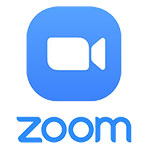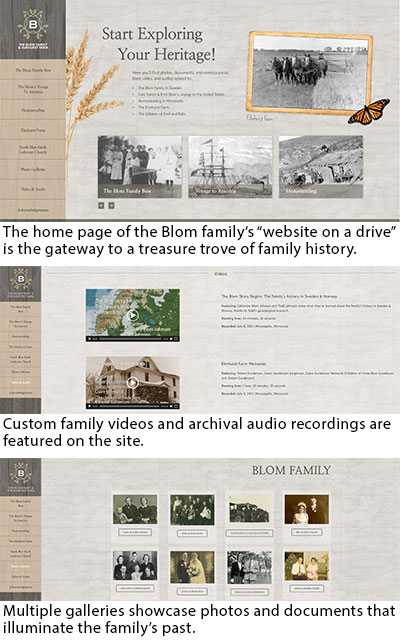Welcome to the Spring 2022 issue!
“Spring will come and so will happiness. Hold on. Life will get warmer.”
Anita Krizzan
Life is already getting warmer here in Tucson, Arizona. I hope you’ll soon be able to shake off winter’s chill, as well!
In this edition, we touch on using Zoom for legacy audio recordings, and a unique “hybrid” method for compiling a family history.
I hope you enjoy this issue of the Family Legacy Video® e-Newsletter. Please e-mail me at steve@familylegacyvideo.com or phone toll-free (888.662.1294) with any questions or comments you have.
Cheers! – – Steve Pender
_________________________________________
Zoom – a possible option for your audio legacy.
 During the pandemic, the question, “Can you record legacy video interviews using Zoom?” is one I’ve been asked many times. While it may have cost Family Legacy Video® some clients, I’ve resisted using Zoom for video interviews. The chief reason: quality.
During the pandemic, the question, “Can you record legacy video interviews using Zoom?” is one I’ve been asked many times. While it may have cost Family Legacy Video® some clients, I’ve resisted using Zoom for video interviews. The chief reason: quality.
Zoom can be a wonderful communications tool. But, as those of you who use the platform know, the bandwidth of Internet connections, as well as the capabilities of webcams and microphones, vary widely. Because of this, there’s just no way to guarantee that any video we’d record over Zoom would come close to helping storytellers look and sound their very best.
However, if you’re in the market for an audio-only interview, Zoom can work. Keep in mind that a decent Zoom audio recording requires quiet rooms and good microphones at each end of the conversation. Now, the final result will probably not be as pristine as an in-person interview recorded using professional microphones and digital recorders. But, if having Family Legacy Video® travel to your location for a legacy audio interview is not in the picture, Zoom is a viable option.
A Zoom-based audio recording can also save you some green. Without the expenses related to travel, Zoom legacy audio recordings can be had for price tags in the hundreds of dollars, as opposed to the thousands for Family Legacy Video’s other offerings.
So, if you’re a bit flexible when it comes to audio quality, consider Zoom.
– Steve Pender
_________________________________________
A “legacy website on a flash drive” – a unique option for preserving your family history.
Videos, audio recordings, books; these have been the traditional ways of preserving, celebrating, and sharing family stories and histories. And choosing one of these platforms over the others is how most folks approach their personal biography projects. But what do you do if your stories, and the family ephemera you want to pass along to future generations, isn’t easily accommodated by these formats? In this case, a “hybrid” approach may be the answer.
I’m talking about a legacy website that lives on a flash drive.
I first wrote about this idea several years ago, while creating just such a website for a Family Legacy Video® client. I thought I’d share that story with you again.
HOW IT ALL BEGAN
As many projects do, this one began with a phone call. A gentleman named Bob wanted to tell his family story. And quite a story it was, starting with Swedish ancestors who emigrated to the U.S. in 1867 and then homesteaded in southern Minnesota. They were hardy pioneers who carved out lives on a unforgiving prairie, creating a farm that stayed in the family for several generations. With the last generation to experience life on that farm now in their 80’s, my client wanted to capture and preserve their stories in a digital form that he could share with the younger generation of his family.
Bob brought lots of assets to the table: A boatload of family photos, documents, newspaper clippings, various booklets and publications, as well as some audio recordings of relatives from the previous generation who had since passed on. He also wanted to shoot video interviews of the siblings and cousins of his generation who had lived on the farm – and who could give first hand accounts of farm and family life.
A CREATIVE CHALLENGE & SOLUTION
The challenge was exciting, and I quickly realized that trying to include all the material in a video would be rather unwieldy – and probably extremely expensive. So how could I present his family information and assets in an entertaining, easily accessible, and reasonably economical way?
My solution was to create a family web site consisting of pages of written information and links to the various documents, photos, and recordings that would help tell the family’s story. The website format would allow users to access information in a nonlinear way, at their own pace. And having the whole thing on a computer drive as opposed to the Internet would eliminate the need for domain name registration and web hosting and worrying about who in the family would keep the site alive in future years.
I phoned my trusted website builder, outlined the challenge to him, and then asked, “Do you think we can incorporate this material into a site that would live on a flash drive?” After some thought, my web guru gave me the green light. My client loved the idea, and we were off and running.
THE PROCESS
What followed were months of research, writing, scanning and organizing materials, recording and editing video interviews in Minneapolis, Minnesota and Tucson, Arizona, and digitizing and editing old audio cassette recordings. Once that was done, I worked with a gifted web designer who created a beautiful look and feel for the various pages. She then handed it over to my web builder, who assembled the final site.
THE FINAL PRODUCT

The result is a self-contained family history website, housed in a custom-engraved high-quality flash drive. It’s packed with photo galleries, documents in PDF format, audio and video recordings, and informative text pages. To run the site, all family members need to do is open it in their favorite web browser.
Honestly, it’s pretty cool.
Of course, no computer drive is archival, so I highly recommend that family members make extra copies to guard against loss.
So, if your family history preservation needs might be best served by this kind of a hybrid solution, don’t hesitate to contact Family Legacy Video®. We’ll be happy to explore options with you.
– Steve Pender
_________________________________________
On the Legacy Video Lounge Podcast: Talkin’ Legacy Videos.
If you ever wanted to hear a legacy video pro dish about all aspects of personal history videos, from the benefits to the production process and everything in-between, you’re in luck! You’ll find just what you’re looking for in Episodes 22-25 of the Legacy Video Lounge Podcast’s Talkin’ Legacy Videos series. Each episode features a spirited discussion, during which Family Legacy Video’s president, Steve Pender, responds to legacy video-related questions from Tucson-based writer Elena Acoba. They’ll help you to better understand what legacy videos are all about – and help you get to know the guy who is the driving force behind Family Legacy Video®. You’ll want to listen to these podcasts!